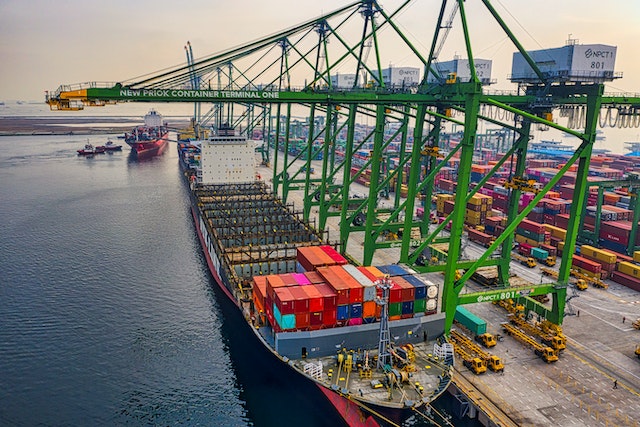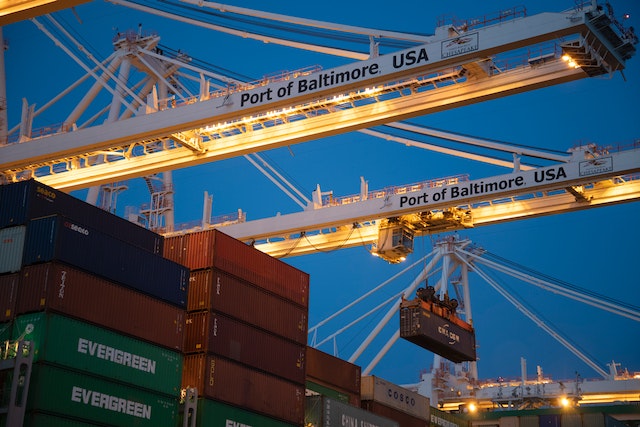The logistics trends that will change the world in 2023
Key points
The logistics industry is a complex and ever-changing field, but it is also an exciting one. By staying up-to-date on the latest trends, logistics providers can play a vital role in the global economy.
- The logistics industry in 2023
- Expected to have a major impact on the logistics industry
- The global economic climate
- Logistics providers
The logistics trends that will change the world in 2023
Logistics in 2023: The Key Trends to Watch
The logistics industry is a rapidly evolving field, and there are a number of trends that are shaping the industry in 2023. These trends are being driven by a number of factors, including the growth of e-commerce, the rise of automation, and the increasing demand for sustainability.
The key trends to watch in the logistics industry in 2023:
- The growth of e-commerce: E-commerce is growing rapidly, and this is putting a strain on logistics networks. Logistics providers are having to find ways to handle the increased volume of shipments, while also ensuring that deliveries are made on time and in good condition.
- The rise of automation: Automation is being used in a variety of ways in the logistics industry, from picking and packing to loading and unloading trucks. Automation can help to improve efficiency and reduce costs, but it also raises concerns about job displacement.
- The increasing use of data analytics: Data analytics is being used to improve decision-making in the logistics industry. By collecting and analyzing data, logistics providers can identify trends, optimize routes, and improve efficiency.
- The need for sustainability: The logistics industry is a major contributor to greenhouse gas emissions. Logistics providers are under pressure to reduce their environmental impact, and this is leading to the adoption of more sustainable practices, such as using renewable energy and electric vehicles.
- The importance of security: The logistics industry is a target for cyberattacks. Logistics providers are having to invest in security measures to protect their data and systems.
These are just some of the key trends to watch in the logistics industry in 2023. By staying up-to-date on these trends, logistics providers can position themselves for success in the years to come.
Specific trends that are expected to have a major impact on the logistics industry in 2023:
- The growth of 3D printing: 3D printing is a rapidly emerging technology that has the potential to revolutionize the logistics industry. 3D printing can be used to create custom parts and products, which can reduce the need for transportation.
- The development of self-driving vehicles: Self-driving vehicles are still in the early stages of development, but they have the potential to revolutionize the logistics industry. Self-driving vehicles could be used to deliver goods and services more efficiently and safely.
- The use of blockchain: Blockchain is a distributed ledger technology that has the potential to improve transparency and security in the logistics industry. Blockchain can be used to track the movement of goods and materials, which can help to prevent fraud and improve efficiency.
- The growth of the gig economy: The gig economy is a growing trend in which people work freelance or contract jobs. This trend is having an impact on the logistics industry, as more and more logistics providers are using gig workers to handle tasks such as picking and packing.
- The increasing importance of sustainability: Sustainability is becoming an increasingly important issue for businesses and consumers alike. This is driving the demand for more sustainable logistics practices.
These are just some of the trends that are expected to have a major impact on the logistics industry in 2023. By staying up-to-date on these trends, logistics providers can position themselves for success in the years to come.
In addition to the trends mentioned above, there are a number of other factors that are likely to impact the logistics industry in 2023. These include:
The global economic climate
- Political instability
- Natural disasters
- Technological advancements
- Regulatory changes
By understanding these factors, logistics providers can better prepare for the challenges and opportunities that lie ahead.
The key takeaways from this article:
- The logistics industry is facing a number of challenges, including the growth of e-commerce, the rise of automation, and the need for sustainability.
- Logistics providers can address these challenges by adopting new technologies, such as 3D printing, self-driving vehicles, and blockchain.
- Logistics providers can also improve their sustainability practices by using renewable energy, electric vehicles, and other sustainable methods.
By staying up-to-date on the latest trends, logistics providers can position themselves for success in the years to come.
Logistics providers can adopt a number of sustainable practices, such as:
- Using renewable energy
- Using electric vehicles
- Reducing the weight of shipments
- Consolidating shipments
- Using more efficient routing
- Improving packaging
End of conclusion
The logistics industry is a complex and ever-changing field, but it is also an exciting one. By staying up-to-date on the latest trends, logistics providers can play a vital role in the global economy.
The logistics industry is a rapidly evolving field, and there are a number of trends that are shaping the industry in 2023. By staying up-to-date on these trends, logistics providers can position themselves for success in the years to come.
Writer
Devraj Gorai
Tags
#logistics #supplychain #shipping #freight #transportation #ecommerce #thirdpartylogistics #sustainability #innovation #technology #trends #success #field
#provides #2023 # industry #rapidly #latest


























